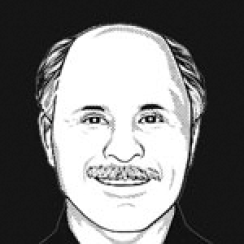
David Ott recently told clients he is leaving New York City-based Viking Capital, which managed $11.8 billion at year-end. He says he wants to spend more time with his family.
We’ll take that at face value.
However, keep in mind that Brian Olson, who also helped to found the firm in 1999, left it several years ago. Last year, he struck out in a lawsuit against his former partners, claiming he was owed $250 million when he was terminated in 2005.
Viking’s ownership structure was always sort of odd to begin with. Andreas Halvorsen owned 55 percent of the firm while Ott and Olson each owned 22.5 percent of the firm.
So, it really should have been called Halvorsen Capital Management.
Sure, Halvorsen was the heavyweight amongst the three. The Norwegian native received his MBA from the Stanford Graduate School of Business in 1990 and graduated from Williams College in 1986. Prior to moving to the United States, he graduated from the Norwegian Naval Academy and served as a platoon commander on the Norwegian SEAL Team.
At Tiger, Halvorsen was a senior managing director and the director of equities. He previously worked as an investment banker in the corporate finance and merger departments of Morgan Stanley.
At Viking, Olson was an analyst who mostly focused on the so-called T-M-T stocks — technology, media, and telecommunications — which were hot in the late 1990s.
Ott, who specialized in consumer stocks at Tiger, was Viking’s chief investment officer.
In any case, the trio left Tiger in early 1999, more than a year before Robertson’s firm closed down. According to Olson’s lawsuit, the three orally agreed upon Viking’s fundamental operating terms. They agreed that the three founders would operate Viking, and divide all of its profits annually. If any one of them left Viking, he would receive only his capital account balance and earned compensation.
The compensation structure was heavily influenced by their experience at Tiger. They forfeited large sums of money after resigning because of its deferred compensation system. According to the court document, they decided that Viking would pay out all the profits annually to avoid the perceived unfairness of Tiger Management’s deferred compensation system.
On October 1, 1999, the trio launched two hedge funds: Viking Global Equities LP (onshore) and Viking Global Equities III Ltd. (offshore).
By the end of 2001, Olson was already unhappy over his compensation. According to court documents, when Halvorsen refused to pay him more, Olson announced he would leave Viking. Halvorsen and Olson then decided to negotiate a mutually acceptable solution that decreased Halvorsen’s share and increased Olson’s share of Viking profits.
In March 2005, Olson took a six month sabbatical to travel with his family. However, when he tried to return six months later Halvorsen and Ott told him not to return.
Olson was given $100 million, which represented Olson’s capital account balance and the remainder of his 2005 salary. But, he felt he was entitled to much more money based on a previously unsigned agreement and sued, according to a court document.
He sued his former partners in 2006 and in late 2009, the Supreme Court of Delaware ruled in favor of Halvorsen and Ott, affirming an earlier judgment of the Court of Chancery.
Ott, however, seems to be leaving on better terms. He is still going to work half-time in an advisory capacity working on idea generation.
In recent years Viking has been one of the more successful of the so-called Tiger Cubs. Unlike most of the others, it finished 2008 unscathed from the global meltdown, finishing flat for the year. And while many of the other Tiger Cubs suffered sub-par years again in 2009, Halvorsen climbed 19 percent.
As a result, I estimate that last year Halvorsen earned an estimated $450 million and Ott $250 million, including gains on their own capital.
This year, however, Viking is lagging the market. In the first quarter, Viking Global Equities was flat while Viking Long Fund was up just 4.5 percent, less than most market averages. Financials were the worst performing sector in VGE, with Mastercard leading the downside, while technology most hurt the long fund, according to the firm’s year-end report.
At the end of the first quarter, Visa Inc. was the largest holding in both funds—7 percent of VGE and 8.1 percent of VLF.
Stephen Taub, who has covered the hedge fund industry for 30 years, is a contributing editor to Institutional Investor and Absolute Return-Alpha






